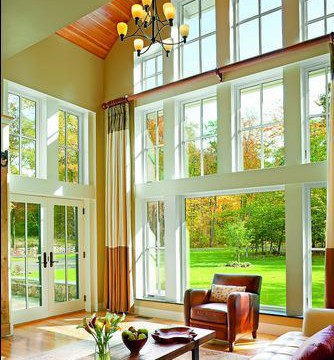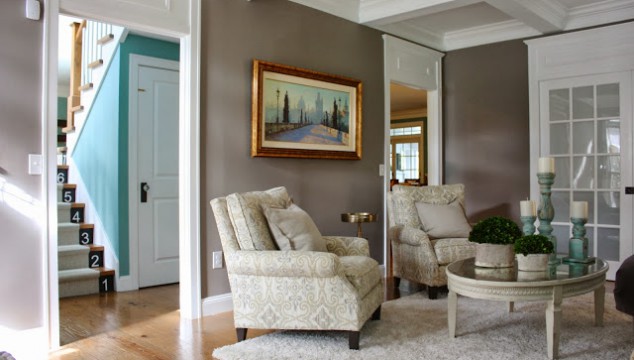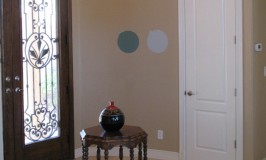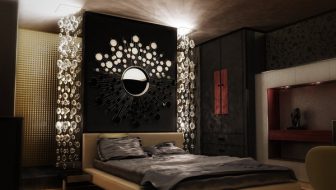I find that most people struggle with selecting the right paint color. It doesn’t help that the standard paint chips are so small you can hardly appreciate the true color, and that there are so many choices of hues to select from that it becomes overwhelming. Not to worry, here are a few tips to guide you through the process of choosing the perfect paint for the job.
Tip #1: Consider the Mood of the Room
Do you want the space to feel fresh and lively, or warm and intimate? Are you going for dramatic or restrained? Is this a formal space or a casual gathering area? Color is a powerful tool that can inspire emotion and establish the mood of a room. Cool, muted shades of blue, green, yellow, or lavender have a relaxing and calming effect, while stronger shades of the same hue can be energizing.


A bold red is always stimulating, while a refined gray makes the perfect neutral backdrop for accentuating other colors in the space.

Tip #2: Pay Attention to Lighting
Lighting changes the appearance of any given color. The exact same hue painted in two separate rooms can look very different. The amount and direction of natural light entering the room, in addition to the type of artificial light present, all affect the perception of color.

Natural daylight reflects a hue’s truest color, while fluorescent lighting casts a distinct blue tone, and incandescent lighting draws out warm tones and yellows. Be sure to view your color selections at various times of day and with the lights on and off.

Tip #3: Go with the Flow
Although each room in your home can be a distinct color, mixing the right hues creates a sense of flow and balance from room to room. Does the combination of colors feel cohesive? Is there consistency in the intensity and color value in each room? As you choose the paint for a particular space, consider how the hues interact and mix with adjacent rooms.

Tip #4: Test the Waters
You’ve narrowed down your choices and selected the perfect shade, but before you commit, purchase a quart of paint to confirm your color decision. Paint a few pieces of foam board and move them around the room. Live with the color for a few days. This step could save you the cost and agony of repainting the space if you’re disappointed with the results.


Ceiling Options
Some designers consider the ceiling the 5th wall, suggesting it deserves a color other than off-white. Painting the ceiling a darker hue than the walls can create intimacy, especially in rooms with high ceilings. This notion lends itself well to bedrooms and formal dining rooms where we often like to evoke a sense of coziness.

A lighter hue can make the ceiling feel higher, and depending on the shade, may reflect more light downward helping to illuminate a dimly lit space.


